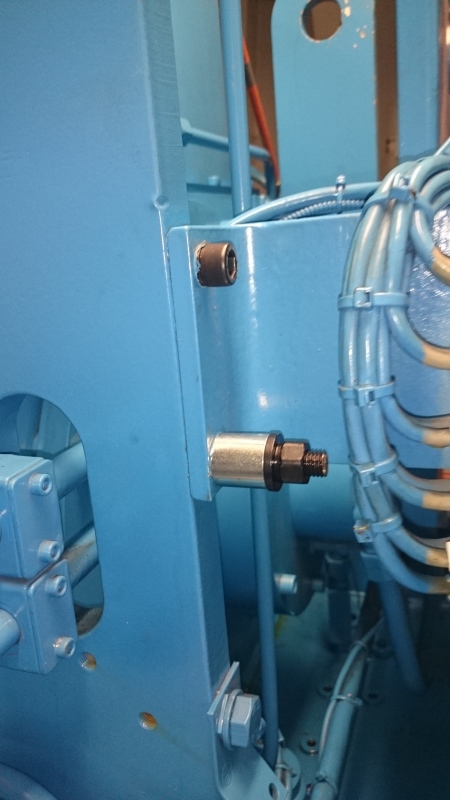Hello,
our company is manufacturing machines for wood industry. In certain devices we have a wood log rolling down and hitting the steel wall. At the moment of impact there is a huge amount of energy absorbed. This causes minor movement of the construction elements, and sometimes we get loosened bolts in that part of machinery or nearby.
Therefore now I must research the ways of locking the bolt.
We tried: din 985 nuts, din 127 washers, and Locktite glue. Nothing helps, it keeps loosening. After that we started welding the nuts to the bolts, because it never has to be disassembled, so it is not a problem.
So now I want to familiarize myself deeper with the ways of locking the bolts. I've tried to find the textbook or any other kind of source of information about the usage and differences (in effectiveness of prevailing loosening) of these methods:
din 985 - nut with nylon
din 6923 - nut with expanded bottom and with teeth
din 127 - washer with cut
din 6798 - washer with many cuts
nord lock - from wurth - looks serious, though pretty expensive, haven't tried it yet.
If anybody could advice me where could I find more information on comparison of these locking variants, I would be so grateful. We have other machines with smaller impacts where could avoid welding, but I want to get some theory and lab experiment result before going to "try and hope" routine.
Thank you for your advice
our company is manufacturing machines for wood industry. In certain devices we have a wood log rolling down and hitting the steel wall. At the moment of impact there is a huge amount of energy absorbed. This causes minor movement of the construction elements, and sometimes we get loosened bolts in that part of machinery or nearby.
Therefore now I must research the ways of locking the bolt.
We tried: din 985 nuts, din 127 washers, and Locktite glue. Nothing helps, it keeps loosening. After that we started welding the nuts to the bolts, because it never has to be disassembled, so it is not a problem.
So now I want to familiarize myself deeper with the ways of locking the bolts. I've tried to find the textbook or any other kind of source of information about the usage and differences (in effectiveness of prevailing loosening) of these methods:
din 985 - nut with nylon
din 6923 - nut with expanded bottom and with teeth
din 127 - washer with cut
din 6798 - washer with many cuts
nord lock - from wurth - looks serious, though pretty expensive, haven't tried it yet.
If anybody could advice me where could I find more information on comparison of these locking variants, I would be so grateful. We have other machines with smaller impacts where could avoid welding, but I want to get some theory and lab experiment result before going to "try and hope" routine.
Thank you for your advice


